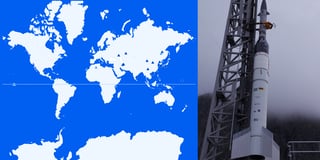Who is exploring our solar system?
Hi, this is Pascal from the Datawrapper App team. This week I want to take a look at active spacecraft and missions currently exploring our solar system and studying places like Mars, Jupiter, the Sun, and even asteroids.
Human beings have always been curious about the planets and stars, especially the ones in our solar system, but only in the past few decades have we been able to see them from close up. Since the first probe Sputnik 1 launched in 1957, hundreds of probes and other spacecraft have left Earth on scientific missions to learn more about our neighborhood in space — and 40 of them are actively sending data home.
There’s a lot to explore in this table (and the linked resources!) — here's a short tour:
Focus on Mars. Due to its accessibility, the strong evidence for surface water in its past, and its similarities to Earth, the red planet continues to be a popular destination. NASA's Perseverance and Curiosity, and China’s Yutu 2 rovers are exploring the surface, while orbiters from NASA (MAVEN), ESA (Mars Express, ExoMars Trace Gas Orbiter), China (Tianwen-1), and the UAE (Hope) study Mars from above.
Studying the Sun. Several active missions are dedicated to observing our star. NASA's Parker Solar Probe flies right through its outer corona at record-breaking speeds to study the Sun's atmosphere and solar winds, while ESA's Solar Orbiter captures stunning high resolution images from different angles and studies the Sun’s polar regions.
Visiting asteroids. Exploring smaller bodies helps us understand how the solar system formed. NASA's Lucy just flew past asteroid Donaldjohanson a few days ago (April 20, 2025!), on the way to its first primary target: the trojan asteroid Eurybates. Japan's Hayabusa2 continues its extended mission to the asteroid KY after successfully returning samples from Ryugu to Earth in 2020.
Farther-off planets. Some spacecraft are also exploring or heading towards other planets. NASA's Juno is still orbiting Jupiter (though its mission might end later this year) and providing images for the JunoCam project; ESA's Juice and NASA's Europa Clipper are on their way there, expected to arrive in the next seven years. Europa Clipper will follow up on evidence of an ocean underneath the moon Europa’s ice crust, which was first suggested around 20 years ago by the Galileo probe. Far beyond Neptune, New Horizons explores the Kuiper Belt, a massive area in the outer solar system home to asteroids and dwarf planets like Pluto and Makemake.
Beyond the solar system. The Voyager 1 and Voyager 2 probes, first launched back in 1977, crossed the heliopause in 2012 and are now in interstellar space. They continue to send home data about conditions outside the Sun's direct influence.
Each and every mission adds to our understanding of the solar system's past and present, and the potential for life beyond Earth. The information gathered by probes, deep space telescopes, and crewed missions helps scientists in fields like planetary science and astrophysics, and can even teach us more about our own planet's climate and future. This ongoing exploration represents a significant global effort in science and engineering, constantly expanding our knowledge of the universe.
This article covers only a small part of all efforts in space exploration — check out NASA and ESA’s mission pages if you want to learn more! We'll be back next Thursday for a Weekly Chart from designer Alicia.



